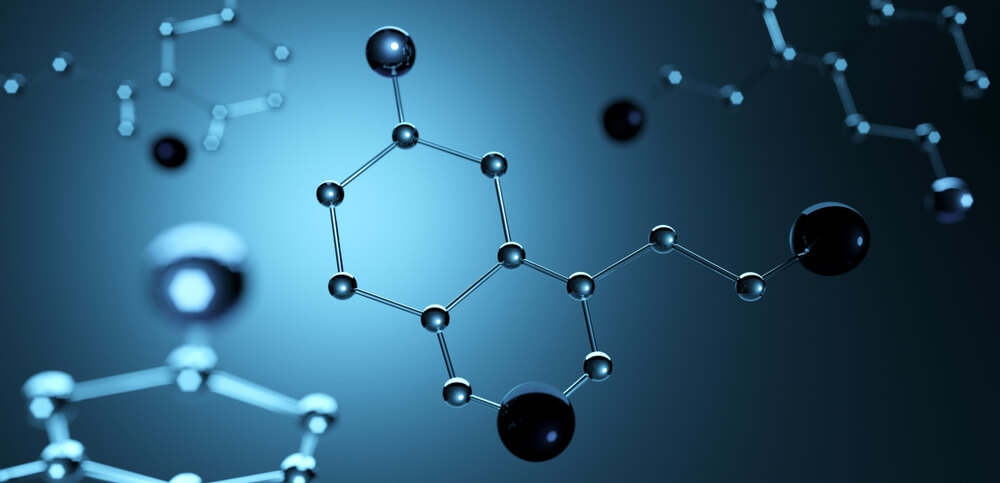The Role of Serotonin in Depression


Escrito y verificado por la psicóloga Paula Villasante
It is well known that serotonin plays an important role in depression. However, do we know how exactly? Keep reading to find out the role of serotonin in depression.
Depression is a heterogeneous series of states. All of these are characterized by a sad mood and anhedonia, that is, the inability to experience pleasure (see bibliography points 2 and 3).
Depressive states have some genes and neurobiology in common, but otherwise differ in symptoms and etiology (1).
In the fifth edition of the Diagnostic and Statistical Manual of Mental Disorders (DSM-5), the diagnosis of major depression encompasses the heterogeneity of symptoms and allows for variability in weight, sleep, and psychomotor activity (4). The neurotransmitter serotonin plays a role in the symptomatology of depression.
The role of serotonin in depression

Apparently, despite decades of research, the role of serotonin in depressive phenotypes has not yet been conclusively determined. The idea that monoamines (serotonin, norepinephrine, and dopamine) were involved in depression came from two fortuitous discoveries (5, 6).
The first occurred during research into the psychotropic drug iproniazid as a treatment for tuberculosis and imipramine as a treatment for schizophrenia. As a result, doctors reported that these psychotropic drugs could reduce depressive symptoms.
An effort was then made to find a common pharmacological property that could explain its antidepressant effect. Finally, the researchers discovereiproniazideoniazid inhibits the enzymes that break down monoamines. For its part, imipramine blocks the serotonin transporter (SERT) and the norepinephrine transporter (NET).
The second discovery was the clinical observations on reserpine. They suggested that this drug, known to eliminate monoamines, increased depressive symptoms. These findings appeared to solve the riddle.
By preventing the breakdown of norepinephrine and serotonin, or preventing their removal from syniproniazideoniazid and imipramine appear to increase monoamine levels in the brain.
Thus, the monoamine-enhancing effect of antidepressant medications (ADM) together with the depression-inducing effects of reserpine suggested that depression could be caused by reduced monoamine neurotransmission (7, 8, 9).
The serotonergic hypothesis of depression
Soon, researchers suggested that serotonin might be the most important monoamine (10). The serotonergic hypothesis of depression tries to give the cause of the disease to the low levels of serotonin in depression.
So, the researchers focused on creating drugs that could increase synaptic serotonin without disturbing other monoamines. This would be possible through selective binding to the serotonin transporter (SERT). This research was successful.
Thus, selective serotonin reuptake inhibitors (SSRIs) are now among the most widely prescribed medications (11). However, the serotonergic hypothesis of depression presents some problems.

Problems with the serotonergic hypothesis of depression (1)
Since it requires the use of invasive techniques, the low serotonin hypothesis has not been directly tested in humans. Still, the research warns of the following problems in this hypothesis:
- Some of the drugs that block serotonin reuptake, such as amphetamines and cocaine, are not effective in treating depression (12).
- Researchers and historians have concluded that reserpine-induced depression is a myth (13) and that it may actually have antidepressant properties (14).
- Selective serotonin reuptake inhibitors (SSRIs) and other antidepressants increase extracellular serotonin within minutes to hours of the first dose, but don’t reduce symptoms until after several weeks of continuous treatment. This pattern is called therapeutic delay (1).
- Attempting to reduce serotonin through the depletion of tryptophan does not cause depression in non-depressed participants (15).
- Neonatal exposure to SSRIs causes depressive symptoms in involuntary rodents (16).
- Downregulation of SERT (the serotonin transporter) increases synapticidederotonin. This is associated with an increase in depressive symptoms (17).
- Some meta-analyses of studies show that antidepressants are only moderately more effective than placebos in reducing depressive symptoms (18, 19, 20).
High or low serotonin in depression?
Given these problems, some authors have questioned whether there really is a serotonin deficit in depression.
For their part, Andrews et al. (2015) suggest that there could be a hypothesis of high serotonin in depression. This would call into question the role of low serotonin in the pathology. The authors also propose that the direct effects of antidepressants that increase serotonin alter energy homeostasis and worsen symptoms.
Thus, it seems clear that more research is needed on the subject. The role of serotonin in depression seems obvious, but it isn’t fully determined.
It is well known that serotonin plays an important role in depression. However, do we know how exactly? Keep reading to find out the role of serotonin in depression.
Depression is a heterogeneous series of states. All of these are characterized by a sad mood and anhedonia, that is, the inability to experience pleasure (see bibliography points 2 and 3).
Depressive states have some genes and neurobiology in common, but otherwise differ in symptoms and etiology (1).
In the fifth edition of the Diagnostic and Statistical Manual of Mental Disorders (DSM-5), the diagnosis of major depression encompasses the heterogeneity of symptoms and allows for variability in weight, sleep, and psychomotor activity (4). The neurotransmitter serotonin plays a role in the symptomatology of depression.
The role of serotonin in depression

Apparently, despite decades of research, the role of serotonin in depressive phenotypes has not yet been conclusively determined. The idea that monoamines (serotonin, norepinephrine, and dopamine) were involved in depression came from two fortuitous discoveries (5, 6).
The first occurred during research into the psychotropic drug iproniazid as a treatment for tuberculosis and imipramine as a treatment for schizophrenia. As a result, doctors reported that these psychotropic drugs could reduce depressive symptoms.
An effort was then made to find a common pharmacological property that could explain its antidepressant effect. Finally, the researchers discovereiproniazideoniazid inhibits the enzymes that break down monoamines. For its part, imipramine blocks the serotonin transporter (SERT) and the norepinephrine transporter (NET).
The second discovery was the clinical observations on reserpine. They suggested that this drug, known to eliminate monoamines, increased depressive symptoms. These findings appeared to solve the riddle.
By preventing the breakdown of norepinephrine and serotonin, or preventing their removal from syniproniazideoniazid and imipramine appear to increase monoamine levels in the brain.
Thus, the monoamine-enhancing effect of antidepressant medications (ADM) together with the depression-inducing effects of reserpine suggested that depression could be caused by reduced monoamine neurotransmission (7, 8, 9).
The serotonergic hypothesis of depression
Soon, researchers suggested that serotonin might be the most important monoamine (10). The serotonergic hypothesis of depression tries to give the cause of the disease to the low levels of serotonin in depression.
So, the researchers focused on creating drugs that could increase synaptic serotonin without disturbing other monoamines. This would be possible through selective binding to the serotonin transporter (SERT). This research was successful.
Thus, selective serotonin reuptake inhibitors (SSRIs) are now among the most widely prescribed medications (11). However, the serotonergic hypothesis of depression presents some problems.

Problems with the serotonergic hypothesis of depression (1)
Since it requires the use of invasive techniques, the low serotonin hypothesis has not been directly tested in humans. Still, the research warns of the following problems in this hypothesis:
- Some of the drugs that block serotonin reuptake, such as amphetamines and cocaine, are not effective in treating depression (12).
- Researchers and historians have concluded that reserpine-induced depression is a myth (13) and that it may actually have antidepressant properties (14).
- Selective serotonin reuptake inhibitors (SSRIs) and other antidepressants increase extracellular serotonin within minutes to hours of the first dose, but don’t reduce symptoms until after several weeks of continuous treatment. This pattern is called therapeutic delay (1).
- Attempting to reduce serotonin through the depletion of tryptophan does not cause depression in non-depressed participants (15).
- Neonatal exposure to SSRIs causes depressive symptoms in involuntary rodents (16).
- Downregulation of SERT (the serotonin transporter) increases synapticidederotonin. This is associated with an increase in depressive symptoms (17).
- Some meta-analyses of studies show that antidepressants are only moderately more effective than placebos in reducing depressive symptoms (18, 19, 20).
High or low serotonin in depression?
Given these problems, some authors have questioned whether there really is a serotonin deficit in depression.
For their part, Andrews et al. (2015) suggest that there could be a hypothesis of high serotonin in depression. This would call into question the role of low serotonin in the pathology. The authors also propose that the direct effects of antidepressants that increase serotonin alter energy homeostasis and worsen symptoms.
Thus, it seems clear that more research is needed on the subject. The role of serotonin in depression seems obvious, but it isn’t fully determined.
-
Andrews, P. W., Bharwani, A., Lee, K. R., Fox, M., & Thomson Jr, J. A. (2015). Is serotonin an upper or a downer? The evolution of the serotonergic system and its role in depression and the antidepressant response. Neuroscience & Biobehavioral Reviews, 51, 164-188.
-
Hyman, S. E. (2010). The diagnosis of mental disorders: the problem of reification. Annual review of clinical psychology, 6, 155-179.
-
Insel, T. R., & Charney, D. S. (2003). Research on major depression: strategies and priorities. Jama, 289(23), 3167-3168.
-
American Psychiatric Association. (2013). Diagnostic and statistical manual of mental disorders (DSM-5®). American Psychiatric Pub.
-
Baumeister, A. A., Hawkins, M. F., & Uzelac, S. M. (2003). The myth of reserpine-induced depression: role in the historical development of the monoamine hypothesis. Journal of the History of the Neurosciences, 12(2), 207-220.
-
Valenstein, E. (2002). Blaming the brain: The truth about drugs and mental health. Simon and Schuster.
-
Everett, G. M. (1959). Mode of action of Rauwolfia alkaloid and motor activity. Biological psychiatry, 1, 75.
-
Jacobsen, E. (1964). The theoretical basis of the chemotherapy of depression. In Depression: Proceedings of the Symposium held at Cambridge (Vol. 22, pp. 208-214).
-
Schildkraut, J. J. (1965). The catecholamine hypothesis of affective disorders: a review of supporting evidence. American journal of Psychiatry, 122(5), 509-522.
-
Coppen, A. (1967). The biochemistry of affective disorders. The British Journal of Psychiatry, 113(504), 1237-1264.
-
Olfson, M., & Marcus, S. C. (2009). National patterns in antidepressant medication treatment. Archives of general psychiatry, 66(8), 848-856.
-
Charney, D. S., Menkes, D. B., & Heninger, G. R. (1981). Receptor sensitivity and the mechanism of action of antidepressant treatment: Implications for the etiology and therapy of depression. Archives of General Psychiatry, 38(10), 1160-1180.
-
Baumeister, A. A., Hawkins, M. F., & Uzelac, S. M. (2003). The myth of reserpine-induced depression: role in the historical development of the monoamine hypothesis. Journal of the History of the Neurosciences, 12(2), 207-220.
-
Healy, D. (2009). The creation of psychopharmacology. Harvard University Press.
-
Ruhé, H. G., Mason, N. S., & Schene, A. H. (2007). Mood is indirectly related to serotonin, norepinephrine and dopamine levels in humans: a meta-analysis of monoamine depletion studies. Molecular psychiatry, 12(4), 331.
-
Ansorge, M. S., Zhou, M., Lira, A., Hen, R., & Gingrich, J. A. (2004). Early-life blockade of the 5-HT transporter alters emotional behavior in adult mice. Science, 306(5697), 879-881.
-
Holmes, A., Murphy, D. L., & Crawley, J. N. (2003). Abnormal behavioral phenotypes of serotonin transporter knockout mice: parallels with human anxiety and depression. Biological psychiatry, 54(10), 953-959.
-
Fournier, J. C., DeRubeis, R. J., Hollon, S. D., Dimidjian, S., Amsterdam, J. D., Shelton, R. C., & Fawcett, J. (2010). Antidepressant drug effects and depression severity: a patient-level meta-analysis. Jama, 303(1), 47-53.
-
Khan, A., Bhat, A., Faucett, J., Kolts, R., & Brown, W. A. (2011). Antidepressant–placebo differences in 16 clinical trials over 10 years at a single site: role of baseline severity. Psychopharmacology, 214(4), 961-965.
-
Kirsch, I., Deacon, B. J., Huedo-Medina, T. B., Scoboria, A., Moore, T. J., & Johnson, B. T. (2008). Initial severity and antidepressant benefits: a meta-analysis of data submitted to the Food and Drug Administration. PLoS medicine, 5(2), e45.
Este texto se ofrece únicamente con propósitos informativos y no reemplaza la consulta con un profesional. Ante dudas, consulta a tu especialista.







